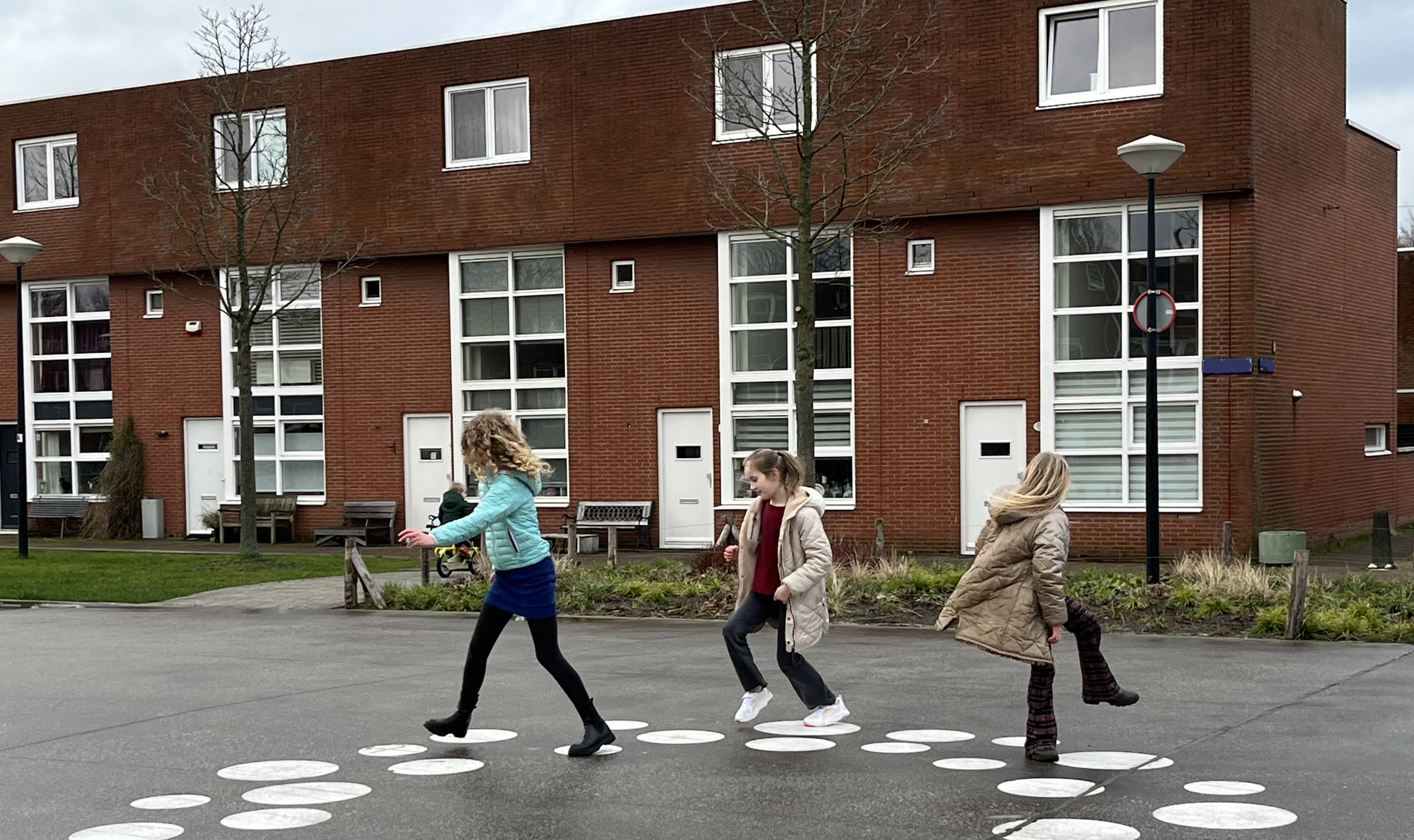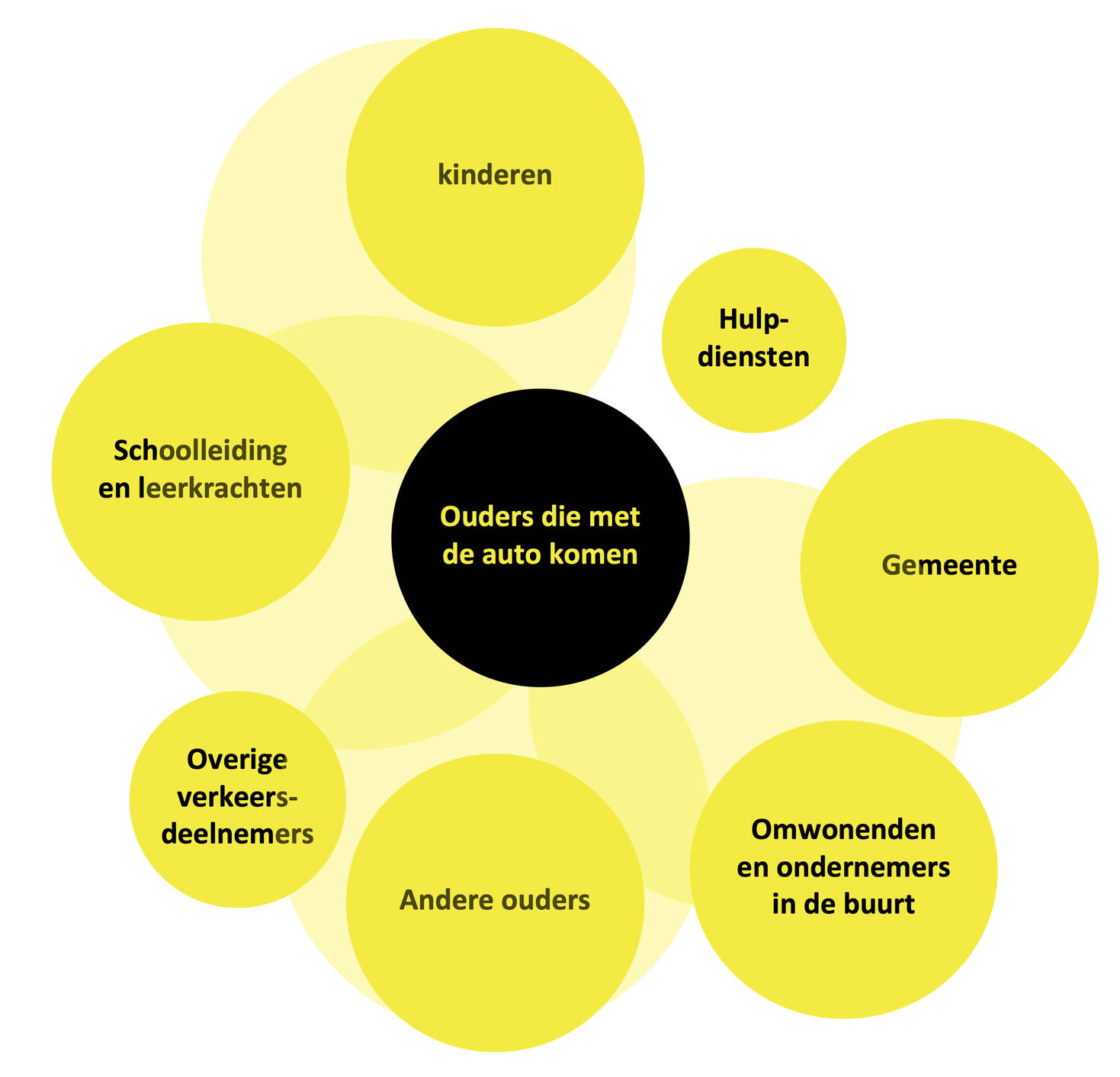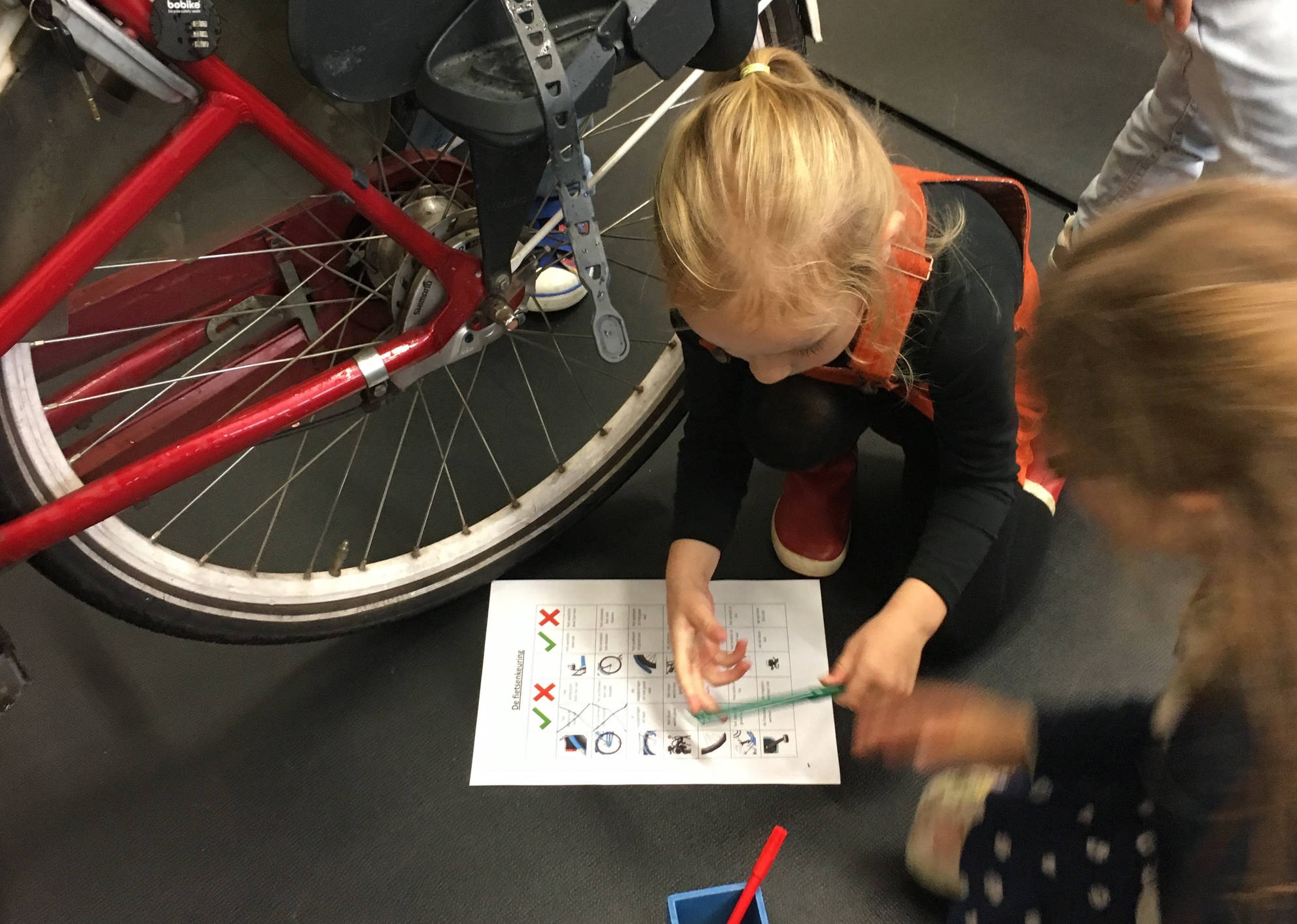Traffic around elementary schools

A relatively large number of children are driven to elementary school by car. This regularly leads to chaotic and dangerous situations around schools. If fewer children are driven to school, it will create a safer, more pleasant, and healthier start to the day. The question is: what can we do to encourage more children to walk or bike to school?

A program for behavior change
What’s the situation?
To answer that question, we first looked into the context. Research from Veilig Verkeer Nederland (Safe Traffic Netherlands) shows that 15% of Dutch children are driven to school by car every day, and 56% are driven occasionally. At first glance, that might not seem like much, but cars take up a lot of space. Parents mostly choose to drive because it allows them to head straight to work afterward. Another common reason for driving is that parents don’t feel the traffic situation is safe enough for biking. What a paradox!
Observing at schools
We visited several schools in the morning and observed what was happening. We noticed that there was often not enough space for the many children arriving on foot, by bike, in cargo bikes, or by car, all trying to get into the school within a 15-minute window. People were in a hurry to get to school on time and then quickly head to work. Due to the lack of space, some cars were parked on sidewalks, and some turned in places where they shouldn’t. The scene was chaotic and, as a result, dangerous for the young children navigating their way on foot or by bike.
Cycling is really fun, but also dangerous.

Using the car isn’t good for the environment, but you get to rest a little longer in the morning, and it’s quick.
Conversations with the people involved
We also spoke with the people involved; school leaders, parents, local residents, and children in the 3rd and 4th grade (age 8 to 10). What stood out was that many children were aware of the benefits of walking and cycling; they said they enjoyed cycling and meeting friends in the morning, and it was good for the environment. On the other hand, some mentioned that walking and cycling make you tired, and that cycling is too dangerous. Schools stated that they couldn’t do much about it; the teaching staff already had enough on their plate.
When you walk, you meet friends along the way, it's nice to see them!
Our vision: the whole system contributes
There are many stakeholders involved in this issue, each with different interests and types of influence. And all these stakeholders can help bring about behavior change, each in their own way. When the whole system contributes, the chances of success are greatest. Moreover, behavior change takes time. To increase the chances of success, communication and interventions over a longer period are necessary. All the elements of the program should complement each other. During this project, we came up with many different solutions and components for the program. Here, we mention a few.

The New Normal
As a first step, schools and the local government could jointly establish a new standard: “At this school, everyone who lives close by should, in principle, arrive on foot or by bike.” If the local government promotes this through campaigns, schools will feel supported and can, in turn, communicate this directly to parents. Every year, a new group of parents bring their 4-year-old children to school for the first time. These parents are already adjusting their morning routines during this transition, so why not encourage walking or biking as part of the process?
Highlighting the Benefits
To encourage behavior change, it’s important to highlight the benefits of the desired behavior and promote the desired good habits. The advantages are numerous: a safer environment, more social interaction, more physical activity, more space for green areas, to name a few. Doesn’t every parent want what’s best for their child?

Children Can Contribute Too
Children can also do their part; through special-event days and lessons at school, they can experience the benefits and fun of biking—and maybe even convince their parents. For example, children could check their bikes together: are the lights working? Or they could think together about what’s needed for the morning routine: does everyone have a raincoat ready in case it’s needed that morning?
Another important element is a two-yearly challenge where children and parents are encouraged to walk or bike to school as much as possible over a set period. Children can earn points if they complete (at least the final part of) the route on foot or by bike. Everyone can participate! The scores are displayed and tracked in a visible spot at the school, perhaps displayed as the total number of extra steps taken compared to the previous week. Rewards aren’t given on an individual level but instead benefit the whole school or even the neighborhood—new playground equipment, perhaps, or more green spaces for the community.
What’s Next?
The project hasn’t been implemented yet. Next steps involve testing and validating certain ideas on a small scale. What works and what doesn’t?